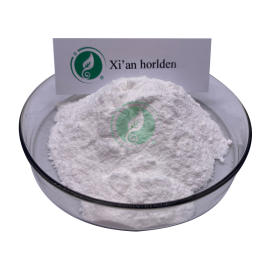Preparation of feed additive premixes.
-
Last Update: 2020-08-30
-
Source: Internet
-
Author: User
Search more information of high quality chemicals, good prices and reliable suppliers, visit
www.echemi.com
feed additive premix is an important part of the feed, but also with the feed quality level and technical content of the embodiment. The formulation design of feed additive premix is the key technology of premix quality, because of the current variety of feed additives and the requirements for matching feed are increasing day by day, so in the design of feed additive premix formulation, we must follow the following basic principles..1. Comprehensiveness. When designing feed additive premix formulation, we should consider it comprehensively and comprehensively. It is necessary to consider the comprehensiveness and balance of feed nutrition level, but also to prevent disease, promote growth and induce food, coloring and other special roles, and improve feed utilization and anti-mold, antioxidant and other functions..2. Effectiveness. There are many kinds of feed additives, but the application of each kind of feed additives, must have a certain practical effect on the specific object of use. Do not use feed additives if they have no effect on the object used and if the effect is not obvious. For example, amino acids in feed feed formulations are already well-balanced and no longer need to be used as amino acid feed additives..3. Economics. The design of feed additive premix formula should take into account the production performance and formulation cost of feed, the pursuit of the best performance price ratio, the available usable additives generally do not use..4. Stability. Feed additive premix formula design should also be relatively stable for a certain period of time, do not change at will, if you need to adjust the formula, should also be orderly adjustment, not suddenly change a lot..5. Connectivity. The design of feed additive premix formula should consider the convergence of the transfer stage, especially the feed taste should not change too much, drug additives should be rotated or cross-used, etc., to ensure that animals can transfer material smoothly, avoid stress, maintain better production performance..6. Flexibility. The formula should also vary due to factors such as animal species differences, seasonal and weather changes, regional differences, environmental differences, and animal health conditions. Relatively inefficient drugs can be reduced or applied in low-risk areas such as ocymposomiasis and low-risk seasons..7. Focus. Feed additive premixes should have a certain focus and relevance. For example, the focus of piglet feed additive premix is to prevent underarm and diarrhea, and the focus of chicken feed is to improve the fertilization rate and incubation rate of eggs..8. Appropriate quantity. The formulation of feed additive premix should be designed in strict accordance with the instructions on the use of dosage, according to the characteristics of animal varieties and the various stages of growth and the actual application of the appropriate amount, can not arbitrarily increase the dosage. . 9. Matching. When designing feed additive premix formulation, we should consider the inter-matchability of additives, pay attention to the simultaneous application of feed additives between the antagonists, especially between drug additives can not have antagonists and interference, and as far as possible to reduce the interaction and interference between additives. For example, the use of saline mycomycin as an anti-phosphate additive, can no longer be used tomycin, tyromycin and so on. . 10. Security. Some feed additives with obvious toxic side effects and some banned additive varieties should not be selected, the use of feed additives should be strictly controlled, especially some heavy metal elements and drug feed additives to be used in a safe range, should also pay attention to the simultaneous use of feed additives between the reaction phenomenon and antagonism, and finally should pay attention to processing processes and preservation conditions, pay special attention to better mixing uniformity and application within the preservation period.
.
This article is an English version of an article which is originally in the Chinese language on echemi.com and is provided for information purposes only.
This website makes no representation or warranty of any kind, either expressed or implied, as to the accuracy, completeness ownership or reliability of
the article or any translations thereof. If you have any concerns or complaints relating to the article, please send an email, providing a detailed
description of the concern or complaint, to
service@echemi.com. A staff member will contact you within 5 working days. Once verified, infringing content
will be removed immediately.







